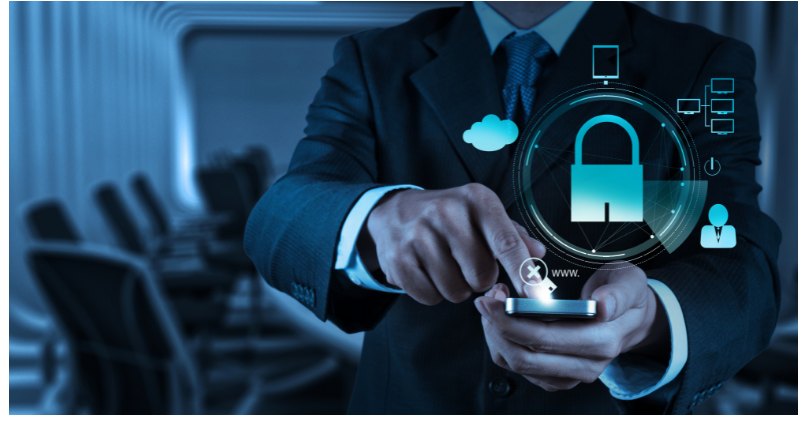

With cyber assaults on the rise among remote work orders, many organizations are increasingly relying on security solutions to prevent a possible compromise. Security management is essential for ensuring an organization's safety while also improving overall efficiency. We'll look at some of the ways security technologies may help businesses run more smoothly.

When it comes to a simplified security approach, on-site locations of various companies nearby give a wealth of financial data, which may be the reason for concern. Individual organizations are responsible for keeping an eye on possible hazards, such as cyber-threats or intellectual property theft. A browser-based security software platform may establish a single operational picture across security systems and IT systems, all of which contribute to keeping company activities running efficiently and safely.
For more efficient protection, security technology such as a CSIM (Converged Security and Information Management) platform may easily integrate new software with a company's particular compliance criteria. By using existing security infrastructure on a global scale, businesses may save costs, decrease risk, and fulfill regulatory criteria. It's critical to have an effective cybersecurity infrastructure in place when hacks happen, but convergent software can react to real-time threats and respond swiftly.
When it comes to security technology, there are numerous simplified processes available that are considerably more cost-effective for a corporation. By combining security data administration into a single interface, streamlined security management systems give a high return on investment with convergent security platforms. In addition, CSIM has been shown to minimize false alarms and reaction times, resulting in a more accurate and cost-effective solution.
The consolidation of all security-related procedures in one location aids in the streamlining and efficiency of corporate operations. Converging security platforms may help businesses reduce risk, logistical problems, and business expenses while preserving organizational security and functioning. Technology is always evolving, which brings with it hazards as well as opportunities to increase efficiency and security.

Security breaches at high-profile firms throughout the world are making headlines every day. The fragility of data and the absence of effective security procedures in businesses of all sizes are highlighted by these assaults. The protection of your data is critical to the success of your company. Trade secrets, financial information, and personnel records are all things that need to be safeguarded. If your security is breached, you risk losing both your reputation and your money. There are things you may do to avoid becoming a news story.
Many businesses appear to be focusing on safeguarding the walls around their data, with firewall technology accounting for over 90% of security spending. However, there are several methods to get over a firewall, including through customers, suppliers, and staff. All of these individuals are capable of circumventing external cyber-security and misusing sensitive data. As a result, you must guarantee that your security efforts are centered on the data rather than the perimeter.
It's easy to imagine dangers coming from outside your business since they're frequently depicted in the news and on television as the most serious and costly. However, the truth is that your insiders are the ones who may damage you the most. Insider assaults are difficult to identify and avoid due to their nature. It may be as easy as an employee clicking on an email attachment that appears to have come from a reputable source, resulting in the spread of a ransomware worm. These types of hazards are the most common and costly throughout the world.
In today's environment, an increasing number of people prefer to work on their mobile or personal gadgets. How can you be certain that these gadgets are reliable? Make sure that all data is secured and that it stays encrypted during migrations.
Believe again if you think that putting antivirus on every computer or gadget would safeguard your organization from cyber-attacks. Hiring a competent firm to undertake a security audit will always discover vulnerabilities you weren't anticipating, as previous data breaches have demonstrated. I recommend that you take a trip around your workplace and glance at the workstations of your coworkers. I promise you'll find a password scribbled down on a sticky note if you look hard enough.
Many businesses, particularly those in healthcare, banking, government, and education, deal with sensitive data as a necessary component of their operations. Having information disposal processes in place helps to avoid stale data from being lost and stolen later. Having a mechanism in place for shredding, deleting, or otherwise making redundant data unreadable will go a long way toward ensuring that your staff doesn't keep it.
Data security continues to be the number one risk to your IT infrastructure, according to many CIOs. Spending more money and time on it is a requirement. With the recognition that cybersecurity must be an inherent component of all business operations, many large firms with sensitive corporate data are hiring chief security officers, frequently to board-level roles.
Many companies still have inadequate password rules, resulting in basic, generic, and easy-to-guess passwords for essential accounts with access to sensitive and valuable data. The first step you can do to improve your security in this area is to use strong passwords. Use passwords that are sufficiently difficult and change them at least once every 90 days. Never use passwords such as "12345" or "Admin1." Never write down your passwords and keep them on your computer where others might see them.
Ensure that your PC is patched and up to date. This is frequently the most effective method of ensuring that it is appropriately secured. Your security software is only as good as the last update it received. Because hackers and ransomware outbreaks are continuously evolving to attack flaws in older software versions, it's a good idea to keep these programs up to date.
This should already be a key component of your IT security plan. You can withstand everything from an accidental file loss to total ransomware shut down if you have safe backups in place. Backup data should be kept in a safe, remote location distant from your principal place of business as a security best practice.
Businesses are more vulnerable to cyberattacks without the security protection provided by the office building – the figurative castle walls. Data interception via unsecured connections might occur if software patches are not applied or if a company's VPN is not used. Companies will be susceptible to breaches and fraud on a never-before-seen scale in 2020. These five measures can help businesses improve their cybersecurity systems:
Every beautiful relationship starts with a simple hello. So let’s chat. It might just be the start of something memorable.

